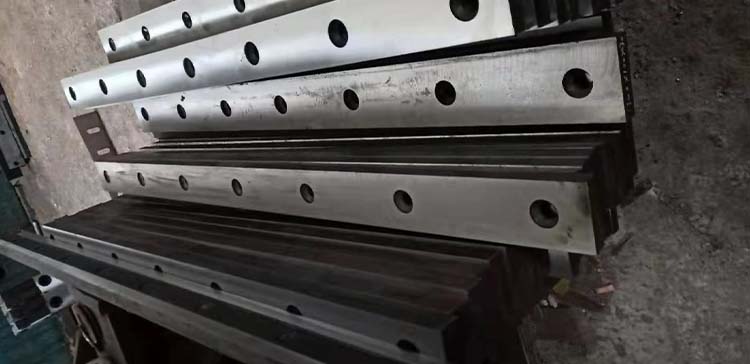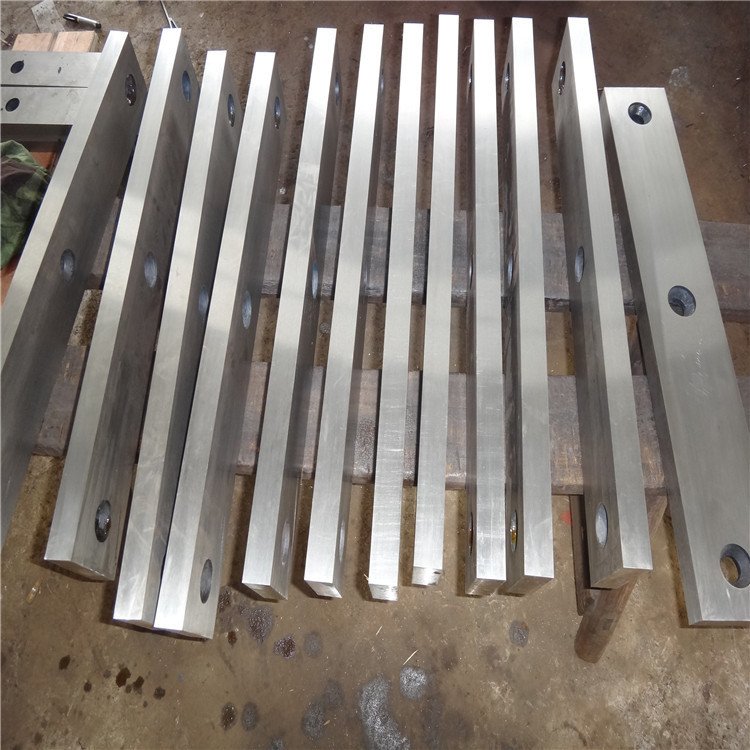The CNC shearing machine employs an advanced integrated hydraulic system, enabling the production of various equipment such as CNC machines, digital display systems, punch presses, shearing machines, and bending machines. With the development of industries like screen manufacturing, can production lines, instrumentation, automotive, and hardware, the demand for CNC shearing machine blades and shearing equipment has gradually increased in recent years. This surge in demand reflects the growing need for precision and efficiency in metalworking, particularly in sectors requiring high-volume production of components with tight tolerances, such as automotive parts or metal containers. The versatility of CNC shearing machines allows them to handle a wide range of materials, from thin aluminum sheets to thicker steel plates, making them indispensable in modern manufacturing.

Following market research, to meet the needs of small and medium-sized enterprises, a research project was established to develop a multi-station CNC self-rotating die shearing machine. The following case study illustrates the development direction of CNC shearing machines and their blades: The machine is divided into an upper half and a lower half, featuring a high-precision CNC self-rotating die. The upper die system in the upper half and the lower die system in the lower half each incorporate a worm gear transmission mechanism driven by a pair of synchronous motors, enabling synchronized rotation of the upper and lower dies. This synchronized rotation enhances cutting accuracy by ensuring that the upper and lower dies remain perfectly aligned during operation, reducing material waste and improving the quality of the cut edges. The upper die system includes an upper transmission sleeve, an upper rotating sleeve, a punch, and an upper sleeve seat, while the lower die system comprises a die, a lower rotating sleeve, a lower sleeve seat, and a lower transmission sleeve. The upper and lower worm gear transmission mechanisms are fixed to the shearing machine frame, with the upper and lower worm gears mounted on the respective transmission sleeves. The punch and die of the shearing machine blade are installed in the upper and lower rotating sleeves, which, along with their seats, are mounted on the upper and lower turntables of the CNC shearing machine and its blades. The use of a rotating die system allows for greater flexibility in cutting complex shapes, as the die can adjust its orientation to match the workpiece, reducing setup times and enabling the production of intricate parts without additional tooling.
Shearing machine blades and equipment failures typically stem from a few common issues, generally caused by the following factors:
- Incorrect Shear Angle Adjustment: If the shearing machine has an adjustable cutting angle, a common issue may arise from the angle being mistakenly set too small. An improperly adjusted shear angle can lead to incomplete cuts or excessive strain on the blade, causing uneven edges or premature blade wear. Regular calibration of the shear angle, guided by the material thickness and type, can prevent such issues and ensure clean, precise cuts.
- Main Pressure Valve Misadjustment: If the main pressure valve is incorrectly adjusted, the system pressure may be too low, compromising cutting performance.Low system pressure can result in insufficient force to shear through tougher materials, leading to blade stalling or material deformation. Operators should routinely check hydraulic pressure settings and consult the machine’s manual to ensure they align with the recommended values for specific tasks.
- Oil Refilling Needs for Series Cylinders: The series cylinders (dual main cylinders) may require oil refilling to maintain proper hydraulic function. Inadequate oil levels in the cylinders can cause inconsistent pressure distribution, leading to uneven blade movement or reduced cutting force. Implementing a preventive maintenance schedule that includes regular hydraulic fluid checks and top-ups can mitigate this issue, extending the machine’s operational life.
- Internal Seal Leakage in Series Cylinders: Internal seal leakage in the series cylinders (dual main cylinders) can cause hydraulic inefficiencies, leading to blade or system failure. Leaking seals can result in hydraulic fluid loss, reducing the machine’s ability to maintain consistent pressure and potentially causing overheating or component damage. Replacing worn seals promptly and using high-quality, compatible seals can prevent costly downtime and ensure reliable performance.

Additional Context and Importance: The CNC shearing machine’s ability to integrate advanced hydraulic systems and precision die systems underscores its role as a cornerstone in modern manufacturing. The multi-station self-rotating die design represents a significant advancement, particularly for small and medium-sized enterprises that require cost-effective solutions without sacrificing precision. By allowing multiple cutting operations in a single setup, these machines reduce production times and labor costs, making them highly competitive in fast-paced industries. Moreover, the blades used in these machines are critical to their performance. High-quality blades, often made from materials like high-speed steel (HSS) or carbide-tipped alloys, are engineered to withstand the stresses of repeated cutting while maintaining sharpness. Regular maintenance of both the blades and the hydraulic system is essential to prevent the common issues outlined above, ensuring that the machine operates at peak efficiency.
Preventive Measures: To address the identified failure causes, manufacturers and operators can adopt several strategies. For instance, investing in training programs for operators can reduce errors related to angle adjustments or improper pressure settings. Additionally, sourcing blades from reputable suppliers with a track record of producing durable, high-quality components can minimize quality-related failures. Routine inspections of the hydraulic system, including checks for seal integrity and fluid levels, can catch potential issues before they escalate into major problems. Finally, leveraging CNC technology to automate certain aspects of the shearing process—such as angle adjustments or pressure monitoring—can further enhance reliability and precision, reducing the likelihood of human error.
Market Implications: The growing demand for CNC shearing machines and their blades reflects broader trends in industrial automation and sustainability. As industries like automotive and hardware push for greener practices, the ability to efficiently process materials with minimal waste becomes increasingly valuable. The development of multi-station CNC machines caters to this need by offering versatile, high-precision solutions that can adapt to diverse production requirements. For small and medium-sized enterprises, these advancements democratize access to cutting-edge technology, enabling them to compete with larger players in the market.
